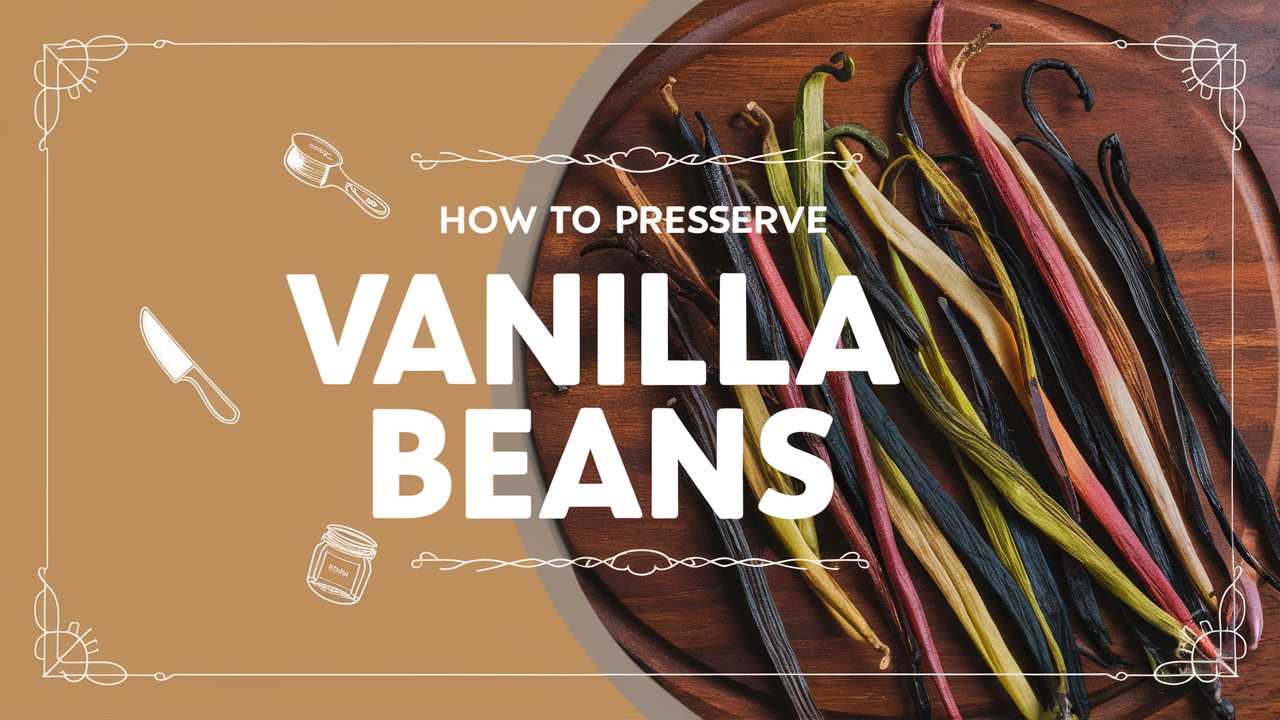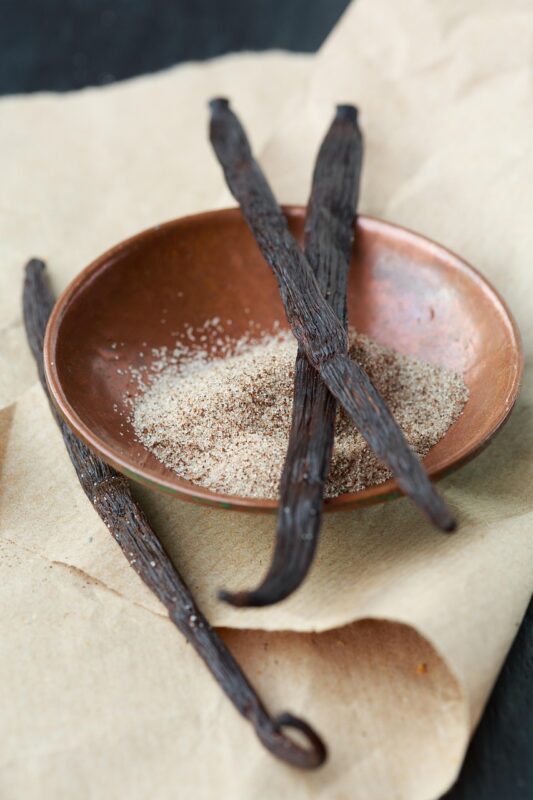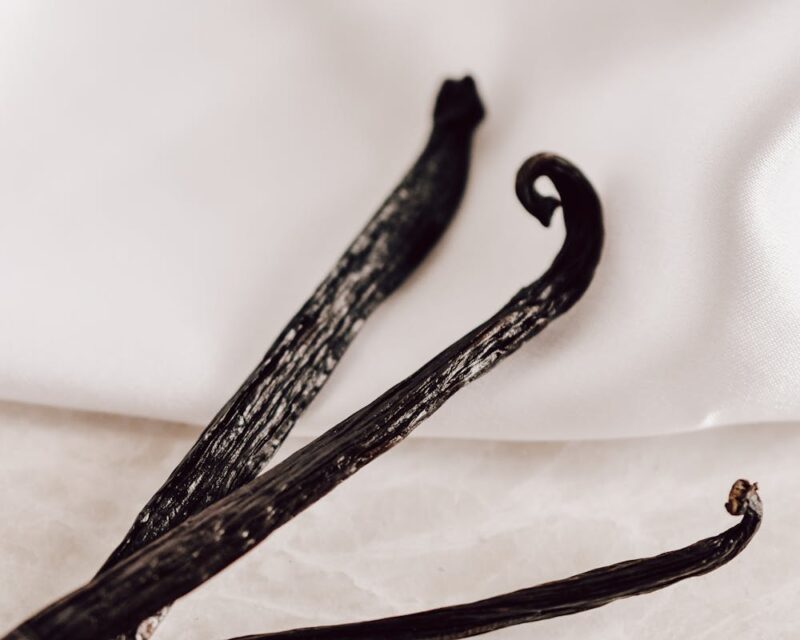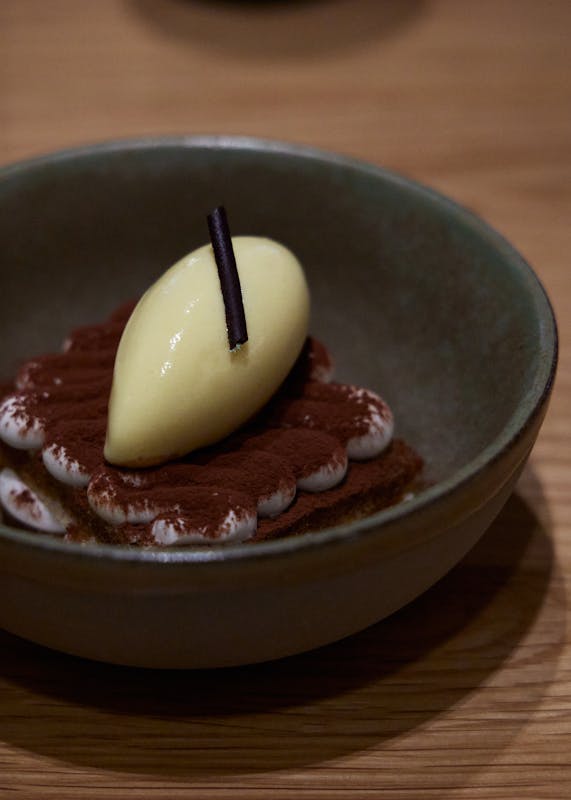Vanilla beans are nature’s exquisite treasures, renowned for their rich flavor and aromatic qualities. Whether you use them for baking, flavoring custards, or infusing spirits, their unique essence can transform an ordinary dish into something extraordinary. However, preserving vanilla beans properly is essential to extend their life and maintain their delightful characteristics. This guide will explore various methods to store and preserve these precious pods, ensuring that they remain as fragrant and flavorful as the day you bought them.
The Best Practices for Storing Vanilla Beans
Selecting Quality Beans
Before considering preservation methods, start with high-quality vanilla beans. Look for plump, oily pods that are flexible and aromatic. Avoid brittle or dry beans, as they are likely past their prime. Purchasing from reputable suppliers can ensure you receive the freshest product possible.
Short-Term Storage Solutions
It’s practical to have short-term storage solutions for vanilla beans, especially if you plan to use them soon after purchasing.
Airtight Containers
Store vanilla beans in an airtight container, which protects them from light, air, and humidity. A glass jar with a tight seal is ideal, allowing minimal exposure to the outside elements. Place a small piece of parchment paper between the beans to keep them from sticking together, preserving their integrity.
Refrigerator
For short-term preservation, consider keeping your vanilla beans in the refrigerator. This environment controls moisture levels and keeps the pods cool. However, remember to wrap them in a paper towel to absorb excess moisture and place them in an airtight container to prevent odors from other foods.
Long-Term Preservation Techniques
If you want to ensure your vanilla beans last for months or even years, consider these methods.
Freezing Vanilla Beans
Freezing is an effective way to preserve vanilla beans without compromising their flavor and aroma. Here’s how:
Clean and Dry: Make sure your vanilla beans are clean and thoroughly dry.
Wrap: Individually wrap the beans in plastic wrap or aluminum foil to protect them from freezer burn.
Seal: Place the wrapped beans in a freezer-safe bag or container, expelling as much air as possible before sealing.
Label: Write the date on the container to help you track how long they’ve been in the freezer.
When you’re ready to use the beans, simply remove them from the freezer and allow them to thaw at room temperature. They’ll be just as fragrant and flavorful as when you put them in.
Infusing in Liquids
Another fantastic method of preservation involves infusing vanilla beans in spirits or oils. Vodka is a popular choice, as it captures the essence without interfering with flavor.
Prepare the Beans: Split the beans lengthwise to expose the seeds and maximize flavor extraction.
Combine: Place the prepared beans in a clean, dry glass bottle. Fill the bottle with vodka or your preferred spirit until the beans are submerged.
Seal and Store: Tightly seal the bottle and store it in a dark, cool place. Allow the infusion to steep for several weeks to develop its flavor.
This infused liquid can serve as an excellent vanilla extract substitute in recipes, and the beans will continue to impart flavor over time.
Creating Vanilla Sugar or Salt
Transforming vanilla beans into vanilla sugar or salt is a delightful way to preserve their essence while creating a delicious pantry staple.
Vanilla Sugar: Split the beans and combine them with granulated sugar in a jar. The sugars will absorb the aromatic oils from the beans, creating an aromatic sweetener perfect for baking or sprinkling on desserts.
Vanilla Salt: Infuse coarse sea salt with split vanilla beans to create a unique seasoning. This works beautifully for savory dishes and adds a special touch to various recipes.
Once prepared, both the sugar and salt should be stored in airtight containers in a cool, dark place for optimal preservation.
Signs of Aging
Even with the best preservation techniques, vanilla beans can eventually age. Recognizing signs of deterioration is crucial in determining whether the beans are still usable.
Dryness: If the beans feel excessively dry and brittle, they may have lost their flavor and aroma.
Color Changes: Any discoloration could indicate spoilage or loss of quality.
Lack of Aroma: If the beans do not emit a strong, pleasant scent, they have likely aged and should be discarded.
Culinary Uses Beyond Baking
Preserving vanilla beans opens up a world of culinary possibilities beyond traditional baking. The versatility of vanilla extends to both sweet and savory dishes.
Infusions and Extracts
Consider using preserved vanilla beans to create homemade vanilla extract. This simple process involves infusing the beans in alcohol and allowing the flavors to meld, resulting in an all-natural extract ready for baking or cooking. You can experiment with different types of alcohol, such as rum or bourbon, for unique flavors.
Savory Dishes
Vanilla can surprisingly elevate savory dishes. Using preserved vanilla beans, you can create unique sauces and marinades. For instance, try adding a hint of vanilla to your barbecue sauce or incorporate it into a creamy risotto for an unexpected twist. The aromatic qualities can enhance the overall depth of flavor in your cooking.
Cultivating a Vanilla Bean Plant
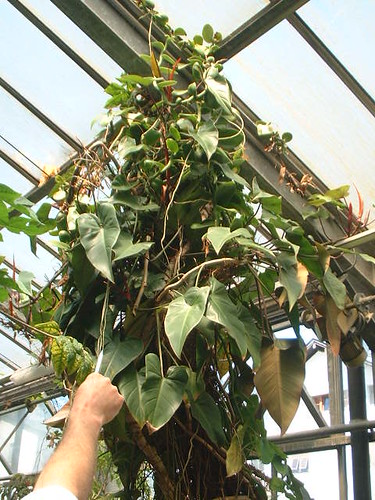
If you find yourself enamored by the world of vanilla beans, why not consider growing your own? While it requires a bit of effort, cultivating a vanilla orchid can be a rewarding experience.
Planting and Care
Vanilla orchids thrive in warm, humid environments, making them ideal for indoor gardening or greenhouse conditions. Here are some essential tips:
Environment: Provide bright, indirect light and maintain humidity levels of around 70% to 80%.
Soil: Use a well-draining potting mix, often consisting of coconut coir, bark, and perlite.
Support: As a climbing plant, vanilla orchids benefit from support structures, such as trellises or stakes.
Pollination
One unique aspect of growing vanilla is that the flowers require hand pollination, as the vanilla orchid’s natural pollinators are scarce. This process involves carefully using a stick to manipulate the flower’s parts to facilitate pollination. Though labor-intensive, this task brings immense satisfaction when you eventually harvest your own beans.
The Cultural Significance of Vanilla
The history of vanilla is rich and filled with cultural significance. Indigenous peoples in Mexico revered vanilla, often using it in sacred rituals. With the arrival of European colonizers, vanilla spread across the globe, and its popularity soared.
Today, vanilla is a prized ingredient in cuisines worldwide, from French desserts to Indian curries. Acknowledging this cultural context adds depth to your appreciation of vanilla beans and why preserving them holds meaning in culinary traditions.
Eco-Friendly Considerations
As with all culinary pursuits, being mindful of the environmental impact of our ingredient choices is vital. Opt for sustainably sourced vanilla beans that do not contribute to deforestation or exploit local communities. Support vendors that prioritize ethical farming practices and provide fair wages to farmers.
Additionally, consider reducing waste by utilizing every part of the vanilla bean. Use leftover bean pods to flavor sugar, salt, or even make homemade vanilla ice cream. Embracing sustainability ensures that the sweet essence of vanilla continues to flourish for generations.
Inspiring Vanilla Recipes
Now that you’re equipped with preservation methods let’s get creative! Here are a few inspirational recipes that utilize vanilla in delightful ways.
Classic Vanilla Pudding
A staple dessert that showcases the beauty of vanilla beans is homemade vanilla pudding. The rich flavor and creamy texture will elevate your dessert.
Ingredients:
2 cups whole milk
1 split vanilla bean (seeds scraped)
1/2 cup sugar
3 egg yolks
2 tablespoons cornstarch
2 tablespoons unsalted butter
Instructions:
In a saucepan, combine milk, vanilla bean, and sugar over medium heat until warm.
In a bowl, whisk together egg yolks and cornstarch.
Gradually whisk warm milk mixture into egg mixture.
Return the mixture to the saucepan, cooking until thickened. Remove from heat, add butter, and strain to remove the vanilla pod. Let cool before serving.
Vanilla-Infused Olive Oil
Take your cooking to the next level with vanilla-infused olive oil, perfect drizzled on salad or paired with bread.
Ingredients:
1 cup extra virgin olive oil
1 split vanilla bean
Instructions:
Combine olive oil and split vanilla bean in a small saucepan over low heat.
Simmer gently for about 15 minutes, ensuring the oil does not exceed 180°F (82°C).
Let cool, strain, and store in an airtight container, allowing flavors to meld for a few days.
Conclusion
Preserving vanilla beans is an art that enriches your culinary adventures. By understanding the best practices, exploring creative uses, and cultivating your own plants, you embrace the full spectrum of what vanilla can offer. The warmth of its aroma, the richness of its flavor, and the depth of its history make vanilla beans a cherished part of many kitchens.


